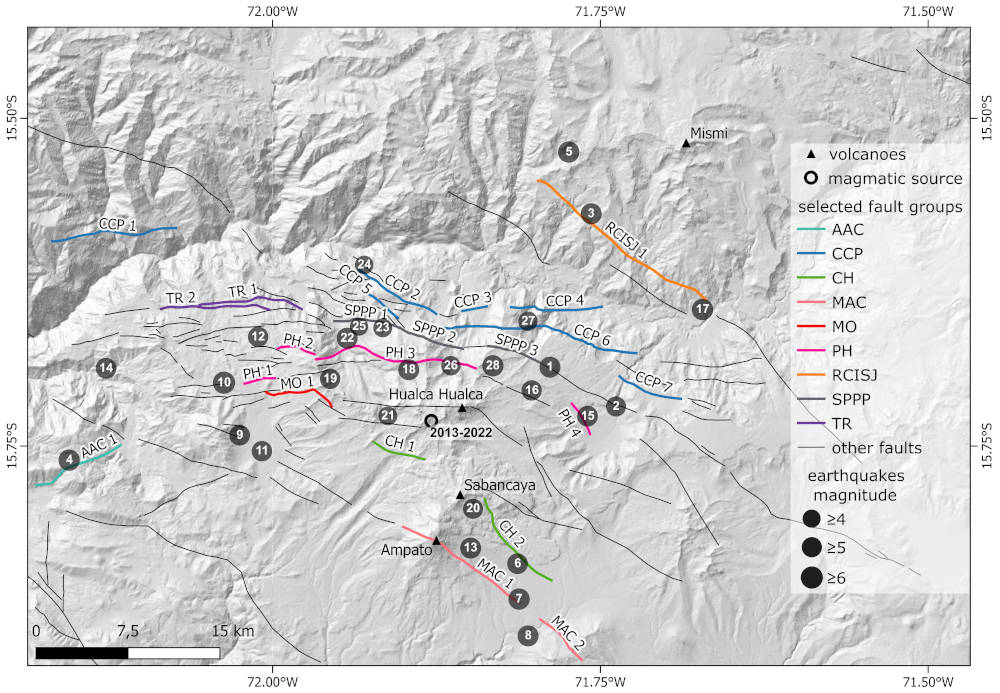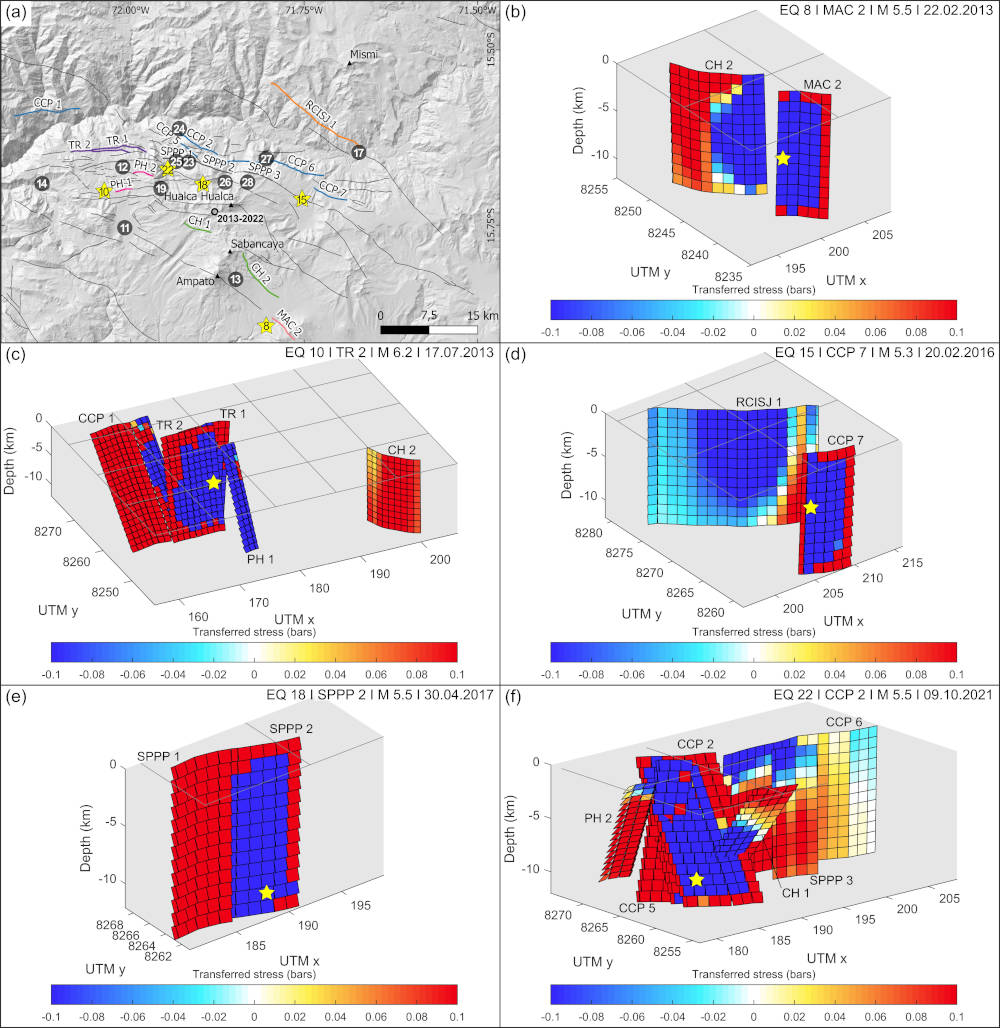The Colca River basin area (Central Andes, southern Peru) is affected by earthquakes (mostly: Mw < 6, depth < 20 km) associated with active crustal faults. Moreover, activity of the Sabancaya volcano has been recorded in this region, mainly in the form of ash and fumarole emissions in recent years. The causes of seismic and volcanic activity, as well as the possibility of their interplay, are still insufficiently understood. In order to investigate the factors influencing the seismic and volcanic activity of the Colca River region, and their potential interplay, an international research team consisting of an IEDS doctoral student, scientists from our Institute and the INGEMMET institute in Peru applied the Coulomb stress transfer analysis. The research focused on the interactions between the selected largest earthquakes from 1991 to 2022, and the impact of the magmatic inflation in 2013-2022 on recorded seismic events. The Coulomb stress change analysis is based on the assumption that a positive change brings the fault closer to failure, and thus to an earthquake, whereas a negative change discourages failure. The obtained results seem to confirm the tectonic source of most earthquakes, while the magmatic activity could only enhance the effect caused by the preceding seismic activity. However, the majority of the analyzed faults were not brought closer to failure due to a positive stress change caused by a previous seismic event or magmatic inflation. Therefore, the coseismic static Coulomb stress change seems not to be a dominant factor determining the occurrence and location of earthquakes in this study area, which leaves room to seek further answers.
The article was funded by the National Science Centre (Poland), Grant Number 2020/39/B/ST10/00042 and was published in Seismological Research Letters.







